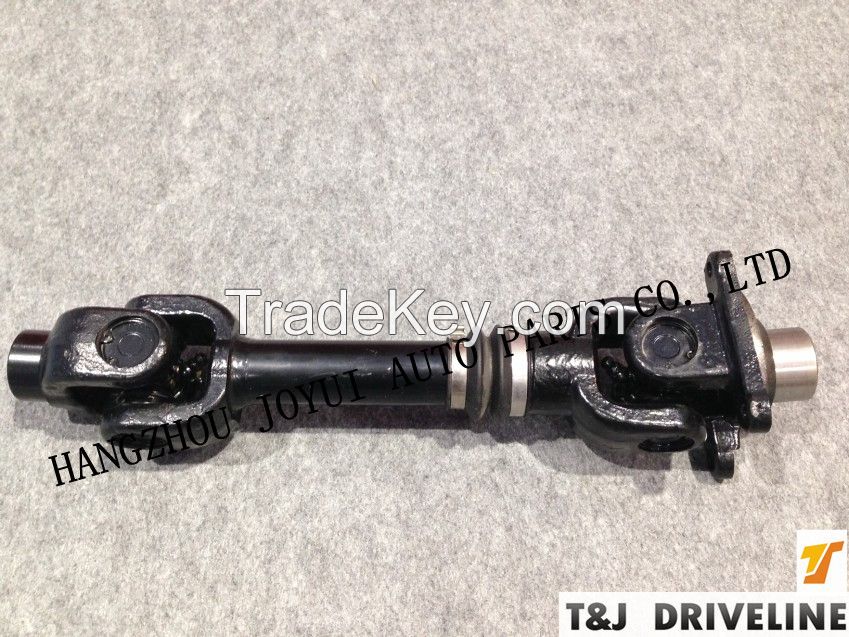Description
A drive shaft, driveshaft, driving shaft, propeller shaft (prop
shaft), or Cardan shaft is a mechanical component for transmitting
torque and rotation, usually used to connect other components of a
drive train that cannot be connected directly because of distance
or the need to allow for relative movement between them.
As torque carriers, drive shafts are subject to torsion and shear
stress, equivalent to the difference between the input torque and
the load. They must therefore be strong enough to bear the stress,
whilst avoiding too much additional weight as that would in turn
increase their inertia.
To allow for variations in the alignment and distance between the
driving and driven components, drive shafts frequently incorporate
one or more universal joints, jaw couplings, or rag joints, and
sometimes a splined joint or prismatic joint.
An automobile may use a longitudinal shaft to deliver power from an
engine/transmission to the other end of the vehicle before it goes
to the wheels. A pair of short drive shafts is commonly used to
send power from a central differential, transmission, or transaxle
to the wheels.
Most of these vehicles have a clutch and gearbox (or transmission)
mounted directly on the engine with a drive shaft leading to a
final drive in the rear axle. When the vehicle is stationary, the
drive shaft does not rotate. A few, mostly sports, cars seeking
improved weight balance between front and rear, and most commonly
Alfa Romeos or Porsche **4s, have instead used a rear-mounted
transaxle. This places the clutch and transmission at the rear of
the car and the drive shaft between them and the engine. In this
case the drive shaft rotates continuously as long as the engine
does, even when the car is stationary and out of gear.
